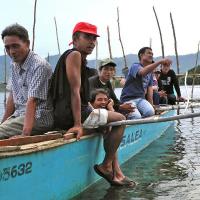August 23, 2018
For thousands of Peruvian families, the road out of poverty is paved in squid
BY: Allison Guy
There are two ways to leave La Tortuga, a fishing town of 7,000 on the northern coast of Peru. One, a pitted gravel road, winds through a landscape of desert canyons and sun-scalded hills.
The other way out of La Tortuga takes longer, but it’s more reliable. That’s the town’s secondary schools — the once-missing links between primary school and a chance at university. Their construction was financed a decade ago by the town’s fishermen, who mainly earn their living catching Humboldt squid.
For fisherman Manuel Rey Purizaca, university was never an option. “We studied in a one-room school,” said Purizaca, who is the director of La Tortuga’s artisanal fishermen’s guild. After graduating from primary school at the age of nine, he headed out to sea with his dad.
Back then, men became fishers, and women wives. Those were the only options. Now, thanks to the hard work of their parents and community, the five Purizaca children — ages 12, 9, 5, 3 and 1 — have a shot at other careers when they grow up.
“That’s what we strive for,” Purizaca said, “that the new generations have opportunities we didn’t have.”
Purizaca doesn’t want his children to become fishers, and for good reason. The job is unreliable and dangerous — his father, a shark fisherman, died when he was three. Even on land, life in La Tortuga is tough. The nearest doctor is an hour away, in the city of Paita. All water is delivered by truck. There’s no garbage collection or sewage disposal. “We haven’t received help from the government for anything,” Purizaca said. “We’re a forgotten town.”
La Tortuga’s touches of modernity — electricity, schools, brightly painted houses topped with solar panels — are in large part thanks to abundant Humboldt, or jumbo, squid. For the last two decades, the squid, locally known as pota, has fueled an artisanal fleet that brings in an estimated $400 million dollars annually. After anchovy, it’s Peru’s most valuable fishery. Though most pota fishers toe the poverty line, a handful of families have amassed modest empires, with fleets of 30 boats and refrigerated trucks to haul their catch.
But their success is as unstable as the region’s climate, bone-dry in some years, buffeted by deluges in others. For years, fishermen in La Tortuga and nearby towns have petitioned the government for the vessel and fishing licenses that would legalize their work. Almost none have been forthcoming.
The lack of licenses locks fishermen out of lucrative international markets that increasingly demand legally caught seafood. It also leaves their catch vulnerable to wealthy — and licensed — industrial fishers, who are showing hints they might start targeting squid.
Legal licenses and permits, many fishermen say, would open more markets, bringing more money and a better life. “It would be an example for Peru,” Purizaca said. Small-scale fishers elsewhere in the nation could follow their lead, he added. “We want the country to benefit. We have created this fleet so Peru can feel proud.”
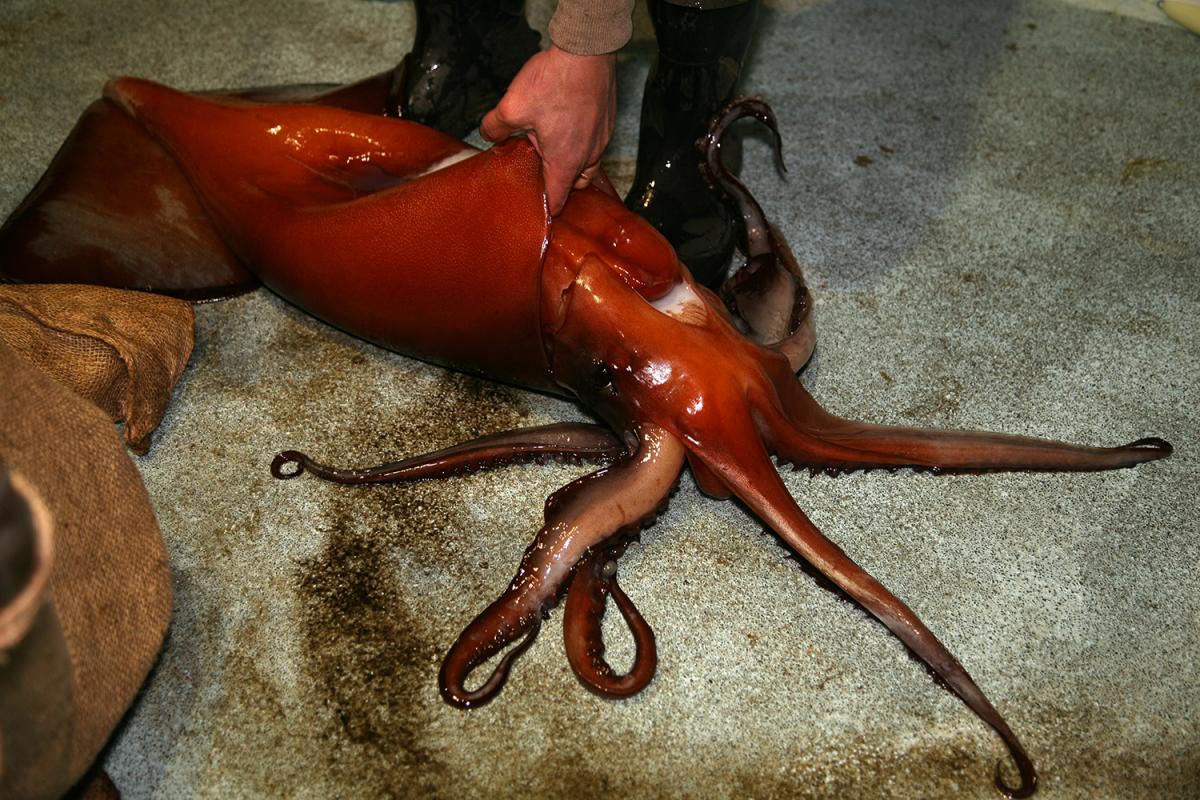
Tentacles by the ton
In late April, wildflowers bloomed beneath wispy, green-barked palo verde trees outside La Tortuga. Dun grass furred the hills, for the moment obscuring drifts of windblown plastic.
This temporary flush of greenery is an artifact of disaster. On March 27, 2017, a storm dumped 12 inches of rain on Piura, the region home to La Tortuga. It was three times what the area normally gets in a year. The storm was part of a severe El Niño weather phenomena that dropped nearly 100 inches of rain in just three months.
In Piura, El Niño gives and takes in spectacular fashion. Last year’s devastating floods left locals stranded without food and clean water for days. But the region’s banana farmers — who grow a water-guzzling plant despite desert conditions — harvested a bumper crop.
In Paita, Piura’s major fishing port, squid fishing has also thrived in the wake of extreme weather. Hundreds of wooden boats line Paita’s hazy, tropical horizon, a floating city that’s just a fraction of the region’s several-thousand-strong artisanal fleet. Twenty years ago, almost none of this existed. 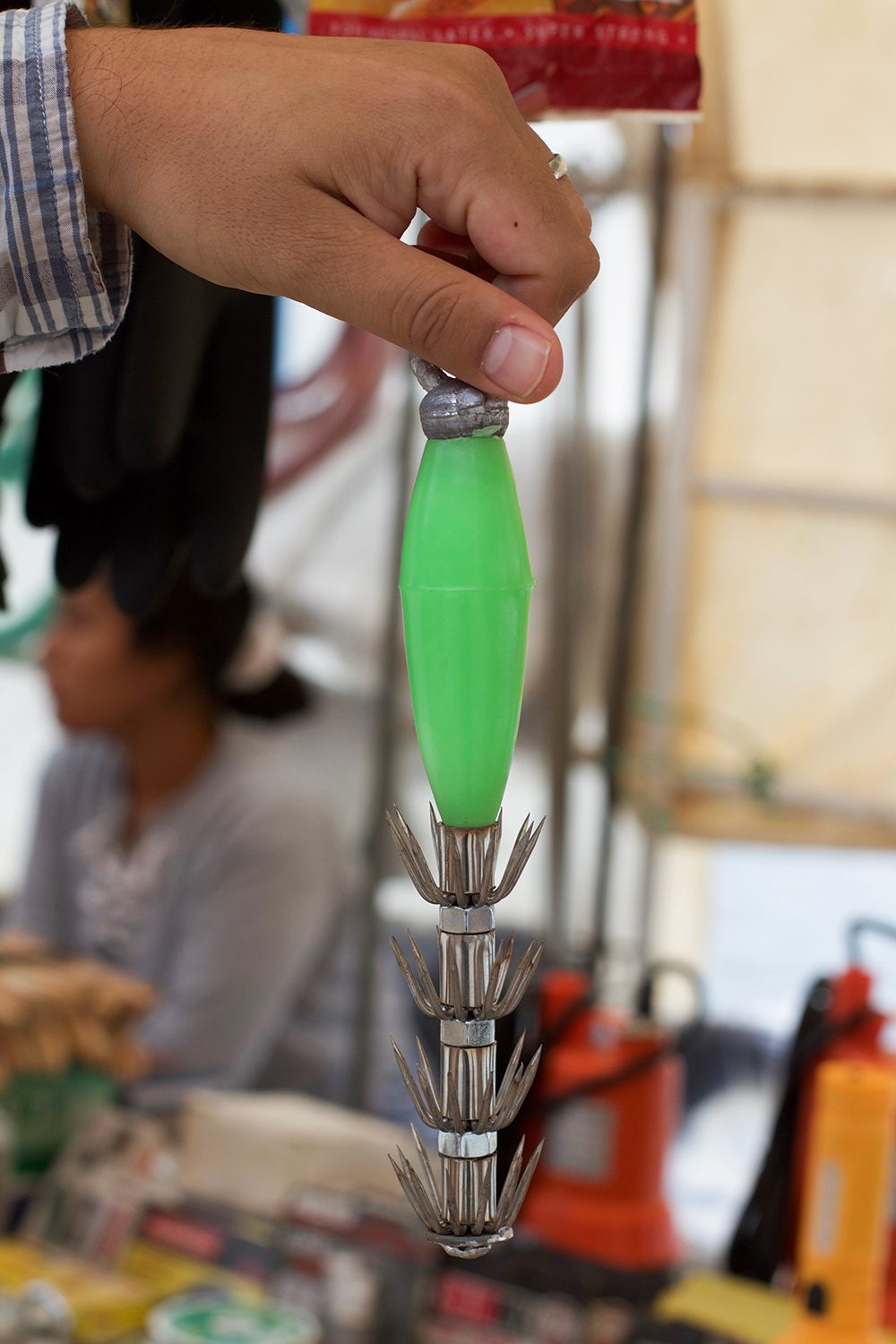
The abundance of fishing vessels is tied to a monster El Niño in 1997 and ’98, said Renato Gozzer Wuest, a fisheries expert and founder of the local nonprofit REDES, which promotes sustainable fishing. El Niño triggered drastic changes in ocean conditions, which disrupted finfish like anchovies, mullet and mackerel, the standard catch for Piura’s fishermen. The same ocean conditions set off an explosion of jumbo squid.
Fortunately, Piura’s fishermen were prepared for the switch. Many of them had learned the tricks of catching pota aboard Japanese and Korean ships, which dominated the fishery throughout the 1990s. Locals learned what gear to use — neon-colored “squid jigs,” bristling with upward-pointing spines — and adapted the jig gear for artisanal vessels, where lines are hauled by hand, not by motors.
Although jumbo squid fetches around $0.40 to $1.50 per kilo at the dock in Paita, the species’ prodigious abundance has kept the fishery profitable. From just 1998 to 1999, Peru’s artisanal pota catch leapt from near-zero to 50,000 metric tons. It’s now the world’s largest invertebrate fishery, averaging 500,000 tons each year.
Double disasters
If El Niño was the fishery’s spark, overfishing has been the fuel. As humans empty the ocean of tuna, sharks and other big, long-lived carnivores, fast-growing predators take over like weeds in an empty field. While there’s almost no information on jumbo squid population patterns, better-studied cephalopods are booming, a 2016 study found, and the trend holds true across dozens of species.
Jumbo squid certainly fit the profile of a weedy creature. They can pack on nearly 100 pounds in their one- to two-year lives. Females produce up to 21 million eggs, the most known for any cephalopod. Their opportunistic lifestyle and ability to thrive in low-oxygen conditions means they could adapt well to changing seas. They’ve already taken advantage of warmer waters to expand their range as far north as Alaska.
But this live-fast, die-young strategy means that jumbo squid cycle through periods of boom and bust. It’s the kind of fishery that requires cautious management, especially since so many families in Piura depend on it for necessities like food, water and education.
Last year, Piura’s squid fishers partnered with scientists for the first time to conduct a scientific survey of pota abundance. The survey found that while the squid aren’t being overfished, they’re likely fully exploited, said Milthon Delgado Mego, the president of AAARCUDIPA, an artisanal shipowner’s association in Paita that promotes local seafood. Catch any more, and the fishery could be in trouble.
The formalization dance
The problem is, with so little reliable data, it’s tough to know how much squid is too much. In an unregulated fishery, something as simple as counting boats can be a headache. This becomes clear on the drive to La Islilla, the village neighboring La Tortuga. There, the hulks of newly constructed wooden boats rise alongside the road. Though it’s been illegal to build new artisanal vessels for years, fishermen continue undeterred.
It’s hard to blame them. Though the government has long promised licenses and permits that would grant their work legal recognition, most fishers have yet to receive any. As a result, paperwork is a rare commodity, and fishermen often operate several boats under a single license.
Fishermen and their allies expressed bafflement at the glacial pace of licensing. For Gozzer, the fisheries expert at REDES, formalization is a simple first step on a much-longer road to responsible squid management. “It’s not hard to formalize,” he said. “You just need to put it in the record. It’s a paradox why we don’t have it.”
Sources blamed a witch’s brew of government corruption, instability and lack of expertise. “At every level, it is so rotten,” a local official said. “Maybe you have some good people in one area, but they can’t move forward because the basis they’re standing on is crumbling, morally and politically.”
The lack of formalization has intensified artisanal fishers’ longstanding distrust of the industrial fleet, which is wholly owned by seven powerful firms. For several years the National Fisheries Society, which represents the industrial sector, has argued that Peru can sustainably land 1 million metric tons of pota, not the 500,000 tons currently caught. Delgados’ shipowner’s organization suspects that industrial fishers want the remaining half-million tons for themselves, though the National Fisheries Society denies this.
“We’ve always had conflict with the industrial fishers,” said David Fiestas, a fisherman from La Islilla. “They’re the reason our fish are disappearing.” In Paita, it’s a common sentiment.
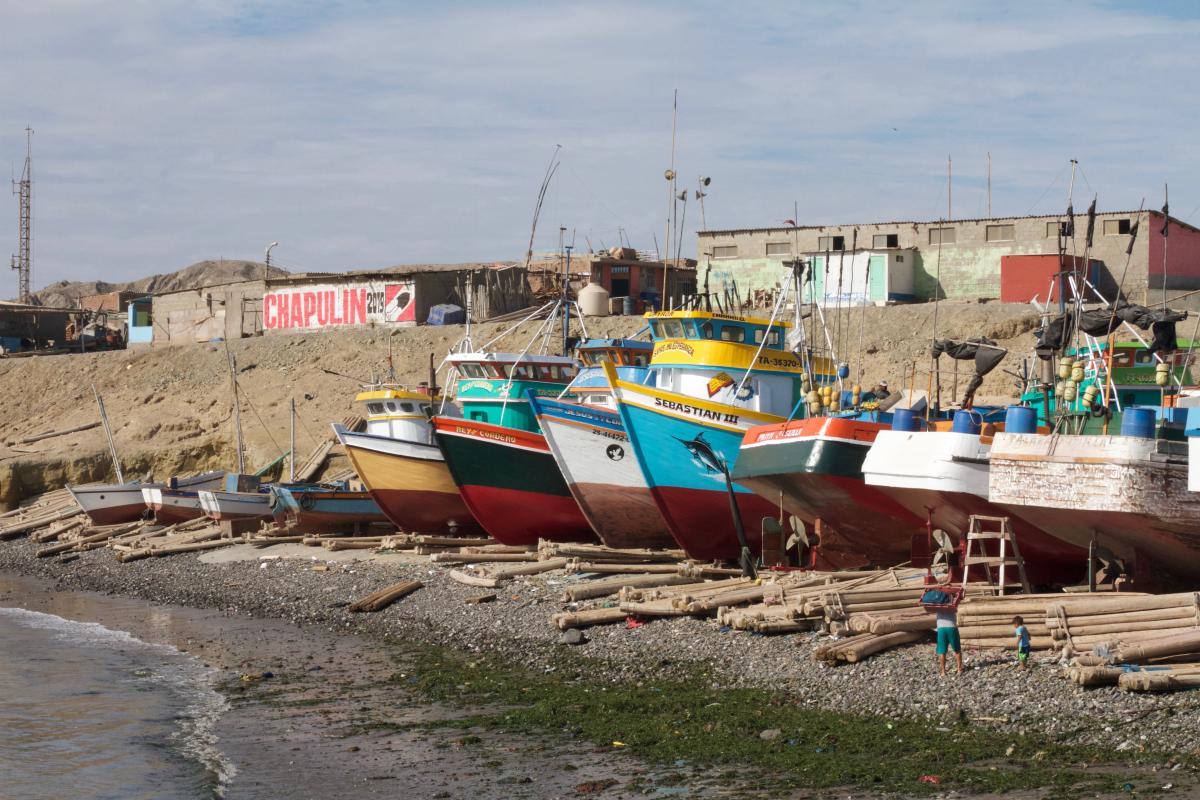
A pota in every pot
Delgado worries that if the industrial fleet starts targeting pota in earnest, the squid that so many Piura fishermen depend on could vanish. His fears aren’t unfounded. Peruvian anchovies, which make up the lion’s share of the industrial catch, aren’t doing well, victims of years of mismanagement and a rapidly changing climate. Peru’s thriving squid might fill the gaps.
Delgado’s organization, AAARCUDIPA, is campaigning to keep pota off industrial hooks for good. AARCUDIPA’s argument hinges on that fact that artisanal fishermen catch squid for human food, while the industrial fleet would likely send squid to rendering plants that manufacture animal feed.
Who eats Peru’s seafood — humans or livestock — is an enduring bone of contention. Each year, the country’s industrial fleet lands millions of tons of anchovy, 98 percent of which is processed into oil and protein powder to feed farmed fish, chickens and other animals. Many fisheries scientists argue this a waste of high-quality protein, especially in a country where 13 percent of children are still malnourished.
Public campaigns to promote direct consumption of anchovies have been stymied by the lack of food-quality product, and the fact these oily fish can be an acquired taste. Now, fishermen and scientists think that pota could fulfill the food-security promise that failed to crystallize with anchovies.
Pota is inexpensive, easy to find in just about any fish market in Peru and has a mild flavor indistinguishable from other squid. It even travels well. Juan Carlos Sueiro, an Oceana fisheries economist, has seen pota ceviche sold as far from the sea as Cuzco, a city in the Peruvian Andes.
But pota is still not that popular, more often appearing as cheap filler in seafood dishes than the main ingredient. Even folks in Paita don’t eat it. Most pota winds up as dried bar snacks in Japan and Korea, or sold as a cheaper alternative to octopus in cash-strapped Spain.
Delgado and other fishermen think the Peruvian government could be doing far more to promote pota as a food, from running squid-centric gastronomic fairs to developing recipes to adapt it to national tastes. “What we demand,” Delgado said, “is the government gives us the facilities, gives us the tools, the possibility of innovating our technology.” The idea is to boost the product’s value and marketability, while preserving the fishery’s artisanal nature.
Fishermen also see hope beyond Peru’s borders. Purizaca, the fisherman from La Tortuga, explained that in nearby Ecuador, pota sells for more than in Piura. But without a license, he can’t trade with his northern neighbors.
Restrictions like these hold for other markets too. Rules in the United States and the European Union, intended to stop the import of illegal or counterfeit fish, mean that Piura’s fishermen have to rely on third parties like processing plants and exporters to slap a label on their products. “It’s a strange process,” Gozzer said. After a chain of falsified documents and invented data, he explained, “an informal product goes in, and a formal product comes out.”
Caught in the middle
There’s another downside to relying on middlemen. David Fiestas, the fisherman from La Islilla, estimates that around half of his profit goes to intermediaries. “It’s not fair,” he said, adding that he and his crew take on all the financial and physical risks of fishing. “It’s too much. We want to create a self-sustaining activity without the middlemen.”
Fiestas spoke from the deck of one of his five boats, anchored among the hundreds of other vessels in Paita. An ice cream dinghy chugged through the oil-slicked water, its bicycle horn bleating.
Fiestas wants his customers in distant countries to known that he and his fellow fishers take pride in their product. “We do this with the best intentions,” he said. “We do this work because we know it reaches people like us.” And he also wants them to know that despite their hard work, “we do not have the quality of life we should have.”
Fiestas’ five children may have better lives to look forward to. His two oldest are in university, and another is studying to enter the police force. But even as fishing paves their way forward, it beckons them back home. Fiestas’ sons “carry the sea in their blood,” he said. During university breaks, they still head out to fish.
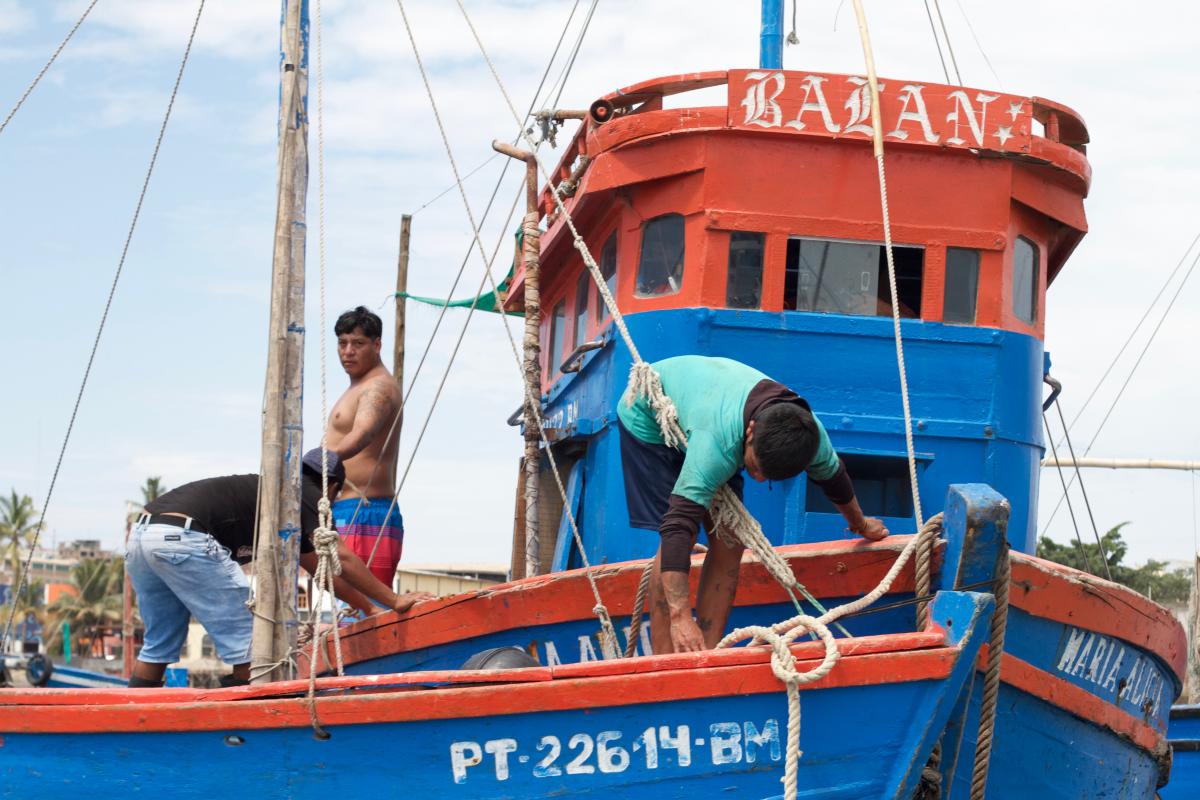
The written material in this article, as well as the photos attributed to Oceana, may be reprinted free of charge as long as the content is not altered. Cite Oceana as the author of the article, and include a back-link to the original post.

